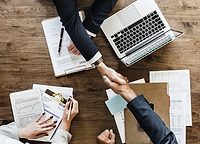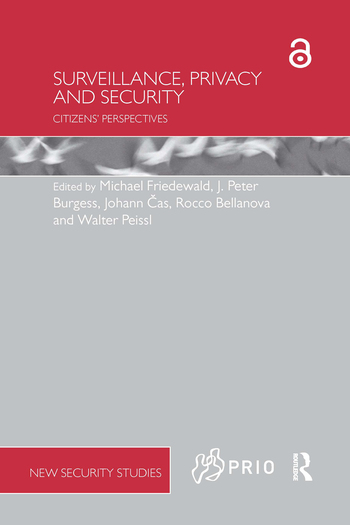How Security System Automation Can Help Tackle Operator Fatigue

The days of a security officer spending their shift watching a few rows of grainy video footage are long gone. Operators today are being asked to actively monitor events from hundreds of video cameras, while also overseeing countless alarms from other devices such as door readers, intrusion panels, perimeter detection sensors, building automation controls and more.
Operators working in mission-critical environments such as airports, cities or public utilities can be alerted to thousands of events per minute. This could include a door that was accidentally bumped open, a bag that was left behind for a few minutes, a camera that dropped offline, an animal that triggered a perimeter breach, or a real event that requires their urgent attention.
Every day, these operators must stay on top of each event, decipher which ones are priorities versus false alarms, and know how to handle every scenario according to compliance standards or company policies. In many cases, these operators are still sifting through paper-bound binders to find out exactly what steps need to be taken to reach resolution.
To say it’s an overwhelming task is an understatement. It’s humanly impossible to actively monitor all these events and take necessary actions without becoming overburdened and stressed.
Keeping a New Generation of Operators Engaged
The demographics of people stepping into these positions are also changing. While control room chairs used to be filled with trained security officers, retired police officers and ex-military personnel, there’s a new wave of younger, tech-savvy operators now sitting beside them. Whether Gen-Xers or Millennials, these operators have essentially grown up with technology in the palms of their hands. Some even have computer science backgrounds. They engage with security technology in different ways than their predecessors. Between them, they share tips and tricks on online forums, looking for new ways to optimize the system to simplify their tasks. Their biggest challenge often stems from the frustration of working with what they might perceive to be outdated technology.
For these reasons, organizations are taking a closer look at how more automated solutions can help streamline workflows, reduce operator fatigue and keep younger operators engaged and motivated. One such solution is a collaborative decision management system.
How Decision Management Systems Reduce the Operator Load
A modern collaborative decision management system can provide organizations with new levels of situational intelligence and incident management. It allows security personnel to make the right decision when faced with routine tasks or unanticipated situations by ensuring a timely flow of information.
A decision management system moves beyond simple event and alarm management. Instead, the solution provides greater levels of automation by collecting and quantifying data from thousands of sensors and devices. Through an advanced rules engine, the system can spot complex situations by correlating various events from all sensors and classify them into individual incidents. The system will then alert operators to the most urgent priorities, while guiding them in their response following organization-specific processes and compliance requirements.
With a common operating picture, prioritized incidents and guided response, operators can confidently handle any situation. For example, based on pre-defined rules, the system would be able to decipher the difference between someone leaning up against a door and a door being forced open. While each event would be bookmarked and recorded, the system would bring the operator’s attention to the forced entry incident, displaying video of what’s happening while providing step-by-step instructions to reach resolution. In the background, the entire incident – from the moment the alarm was triggered through all the steps the operator took to resolve the situation – is automatically logged in the system. This takes a huge load off the operator who can then quickly jump to the next task and diffuse other potential vulnerabilities.
For events deemed less urgent, such as a camera falling offline, the system can automatically trigger a maintenance request without requiring operator intervention. For instance, an organization can implement a rule that tells the security system to send an email or SMS to maintenance crew when a camera goes down. The task is handled by other specialized personnel, while the control room operator can concentrate on issues that require more hands-on intervention or investigation.
Taking the Benefits of System Automation Further
What’s even more interesting is seeing how control room managers and supervisors are using this incident data to review internal policies and processes. On a monthly basis, they can pull incident reports, compare how common scenarios were handled, and then potentially identify improvements. For instance, they might notice that their operators need additional training or that certain response processes should be updated. They can also use these reports during compliance audits to show industry or government organizations how their team is working in accordance with new laws or standards. And, all that information is available to them at the click of a mouse button.
The automation of tasks even extends into the secure transfer of evidence and flexible reporting. There is no longer a need for an operator to spend time copying files to USB sticks and hand-delivering evidence to law enforcement. Instead, everything that gets classified and logged within an incident can be transferred over to a digital evidence repository. From there, the operator can securely email digital files to authorized individuals in other agencies. Any time a permitted user views or downloads a file, the action is logged, ensuring chain of custody is always retained.
Making Sure Operators Are Better Prepared
Operators are overwhelmed and tired. When there are hundreds of cameras to watch, thousands of sensors to manage, and alarms sounding at every turn, there is little reason to wonder why.
A collaborative decision management system helps to automate tasks and streamline workflows, ultimately empowering operators to quickly and confidently handle any situation. So whether an operator is a trained security officer who has been on the job 10 years or a tech-savvy Millennial fresh out of university, an organization can ensure that their security team is better prepared to handle stressful situations, and that their security operations always remain efficient and compliant.
Looking for a reprint of this article?
From high-res PDFs to custom plaques, order your copy today!








